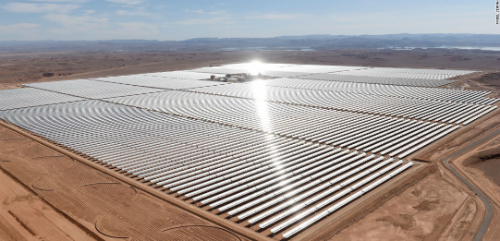The Middle East and North Africa (MENA) economies are very diverse in terms of their dependence on foreign resources, penetration of renewables and several other contemporary trends that keep on reshaping the energy landscape across the region. These profound changes have potentially far-reaching economic implications, whereby these trends include increasing energy demands, shale gas abundance, the rising role of natural gas in the energy portfolio and the growing importance of liquefied gas (LNG) in international trade. Currently, unsustainable upticks in energy demand (more than 5% annual growth in most MENA countries) can put more pressure on fossil fuels.
Fossil fuels are still the most dominant part of the energy mix with their share ranging from 80 percent to almost 100 percent in some countries. While their importance is expected to persist in the future, the share of fossil fuels – oil in particular – may fall proportionally due to the diversification through alternative and greener sources. Countries in the region will have to adapt to the new energy dynamic in order to keep up with their economic goals and development aspirations. The key challenge is the decoupling energy demand and economic growth. MENA economies are facing an urgent need to diversify their energy portfolios and resources. The abundance of shale gas and the growing LNG trade are also having an impact on oil and gas prices, which has also contributed to the shifting of the geopolitics of gas markets.
The MENA countries will need to tackle a number of serious energy challenges especially in the context of low oil prices, still below 50 dollars a barrel. The energy “revolution” will consist of a shift from an energy system, which relies mostly on non-renewable energy sources to a more efficient, lower-carbon energy mix. Despite the slow uptake of renewables, especially in energy exporting countries, the future forecast looks promising, mainly in view of plans and programs that are being implemented by a number of countries in the region.
Once these solutions are scalable and deployed more widely, green resources will lead to important energy savings and generate other socio-economic benefits. This transition is thought to bring a positive impact both on oil and gas exporting countries as well as help maintain export capabilities and guarantee government revenue streams. As to the energy importing countries, the transition is likely to reduce their dependence on foreign energy by exploiting locally available, renewable energy sources.
The MENA region is characterized by major differences in energy dependence – some countries exporting half of their domestic production and others being dependent on foreign sources for more than 90% of their energy needs. Many countries will be able to decrease their dependence mostly by exploiting locally available resources of renewable energy. Energy cooperation is important for energy security and economic development of the region. There is also a great potential for regional electricity trade, but with the exception of a few countries, despite the abundant availability of renewable resources and the potential socio-economic benefits, renewables’ penetration is still low in the region.
Ultimately, many obstacles would need to be overcome for their large-scale development and deployment in the region, though the outlook seems promising: several ambitious renewable energy plans being launched across the MENA that will benefit the whole region in terms of energy security, energy savings, reduced CO2 emissions, employment and the creation of local industry.
‘Material Factors for the MENA Region: Energy Trends’ – Working Paper by Emanuela Menichetti, Abdelghani El Gharras and Sohbet Karbuz – Barcelona Centre for International Affairs.




